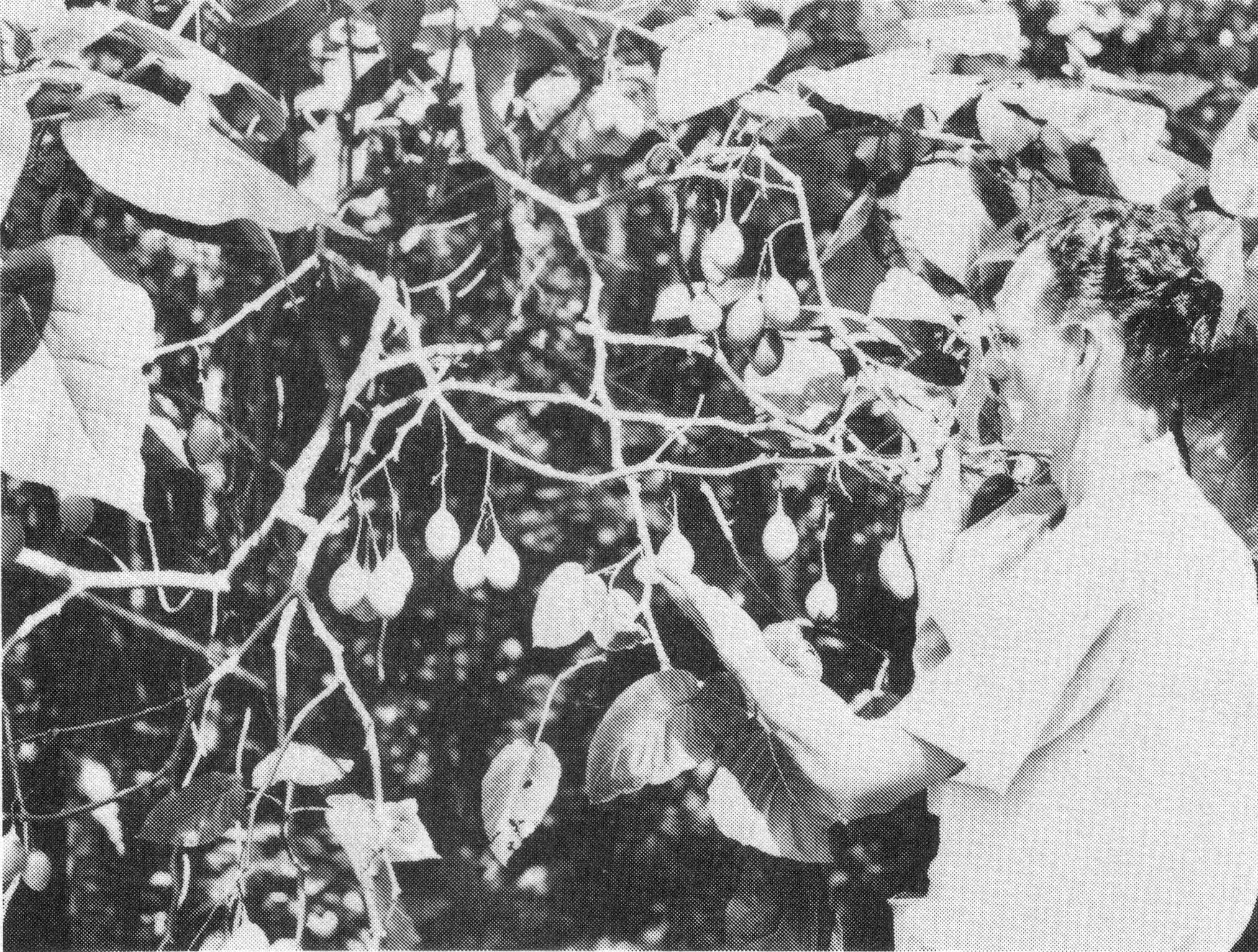|
References: Dalziel 1948, Irvine 1961. SolanaceaeCyphomandra hotness Sendt.Common names: tree tomato (English); arbol de tomates, palo de tomate (Spanish); tomate d'arbre (French); tomate frances (Portuguese). Origin: South America. Distribution: Tropical highlands and warm subtropics. Cultural requirements: Grows best in frost free climate with warm days, cool nights, well-distributed rainfall. Prefers light, mildly acid soil. Not tolerant of wind, root-knot nematodes. Description: Herbaceous shrub to 4 m. Propagation by seed, cuttings. Fruit production in 1-2 years from seed. Some trees flower all year. Fruit set only if night temperatures cool. Fruit matures in 60-90 days. Fruit conical to ellipsoid, 4-6 cm long, 3-5 cm wide; external color yellow, red, or purple; internal color yellow or orange. Utilization: Pulp eaten fresh but used mostly in jams, sauces. Flavor subacid to sour, some rather strong; moderate appeal. Fair potential for processing in highland Tropics, subtropics. References: Fletcher 1965, Fouqué 1974. 
|
Solanum muricatum
Alt. Common names: melon shrub, pepino (English); pepino, pepino dulce (Spanish); melon-poire, poire-melon (French). Origin: Southwestern South America. Distribution: Tropical America: limited introduction elsewhere. Cultural requirements: Subtropical to tropical highland climate with cool to hot days, cool nights, and well-distributed rainfall. Prefers light, fertile, well-drained soils. Grows poorly in hot tropical lowlands. Not tolerant of freezing temperatures. Description: Herbaceous shrub to 1 m. Propagation by seed. Fruit ovoid to ellipsoid, 5-20 cm long; external color green, white, or yellow, often with purple stripes, internal color white or yellow. Good selections in Ecuador, Peru and Chile. Utilization: Pulp eaten fresh, canned, preserved. Flavor sweet to subacid, much variation in quality; moderate appeal. Good potential for commercial production. References: Fouqué 1974, Popenoe 1924. Solanum quitoense Lam. Common names: naranjilla (English); lulo, naranjilla, naranjilla de Quito (Spanish); morelle de Quito; naranjilla (French). Origin: South America (Andes). Distribution: Some introduction into other areas but not common outside South America Cultural requirements: Cool, moist tropical highlands with light, fertile, well-drained soil. Not tolerant of frost, wind, root knot nematodes. Does not grow or set fruit well in hot tropical lowlands. Description: Herbaceous shrub to 2 m. Propagation by seed (grafting on nematode-resistant root-stocks has been done experimentally). Fruit production in 10-13 months from seed. Flowers all year. Plants hermaphroditic, self-fertile. Fruit matures in 50-60 days. Fruit globose to ovoid, 3-5 cm long, 4-6 cm in diameter, in clusters of 3-4; external color yellow or orange, internal green. Utilization: Juice consumed fresh, mixed with other juices, used as flavoring in desserts. Flavor subacid; universal appeal. Good potential for limited commercial production in areas with suitable climate. References: Gattoni 1957, Ledin 1952, Schultes and Cuatrecasas 1953. Solanum topiro Humb. at Bonpl. (mistakenly called S. hyporhodium) Common names: cocona (English); cocona, lulo, topiro (Spanish). |